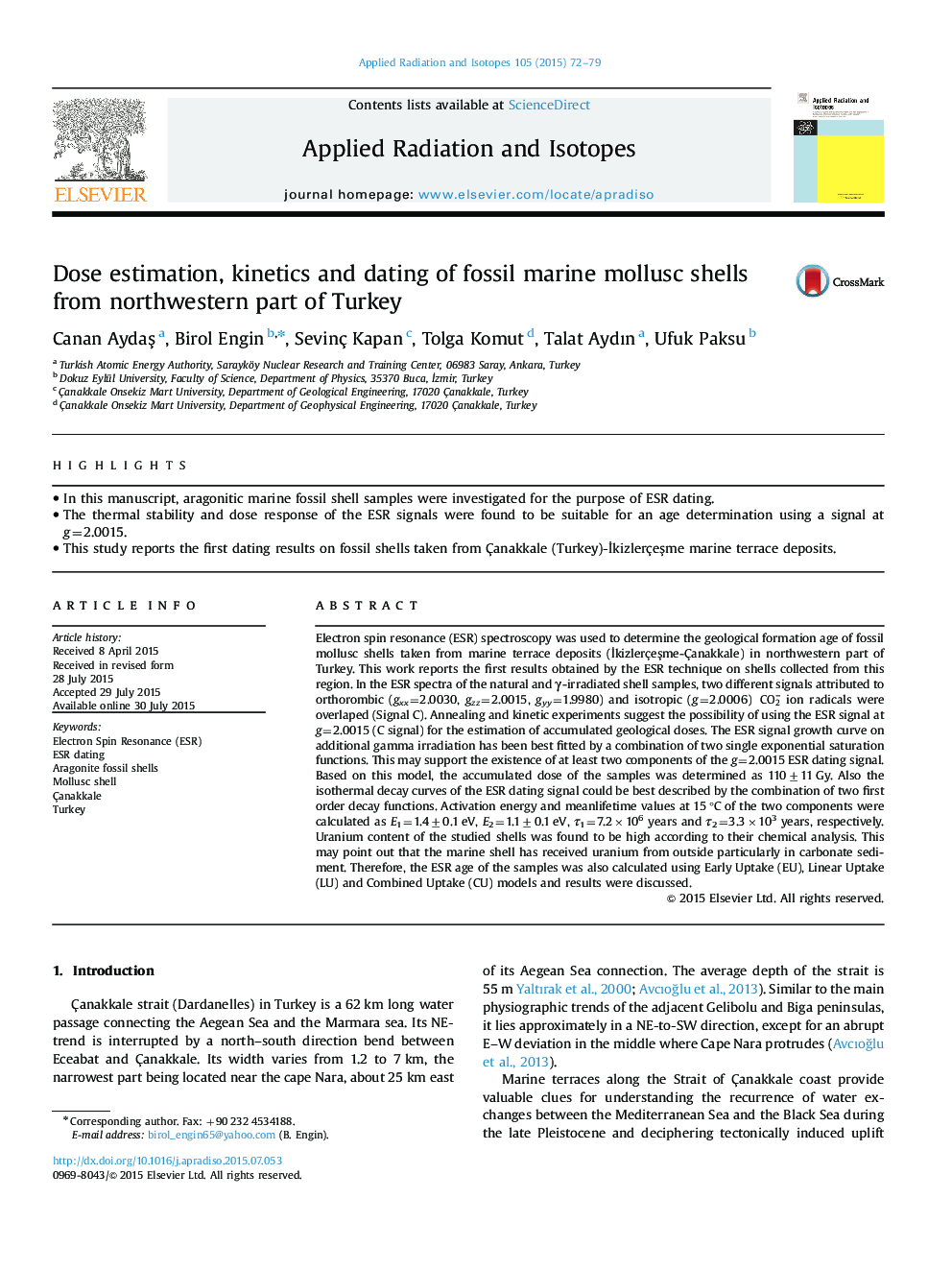| کد مقاله | کد نشریه | سال انتشار | مقاله انگلیسی | نسخه تمام متن |
|---|---|---|---|---|
| 1875817 | 1532092 | 2015 | 8 صفحه PDF | دانلود رایگان |
• In this manuscript, aragonitic marine fossil shell samples were investigated for the purpose of ESR dating.
• The thermal stability and dose response of the ESR signals were found to be suitable for an age determination using a signal at g=2.0015.
• This study reports the first dating results on fossil shells taken from Çanakkale (Turkey)-İkizlerçeşme marine terrace deposits.
Electron spin resonance (ESR) spectroscopy was used to determine the geological formation age of fossil mollusc shells taken from marine terrace deposits (İkizlerçeşme-Çanakkale) in northwestern part of Turkey. This work reports the first results obtained by the ESR technique on shells collected from this region. In the ESR spectra of the natural and γ-irradiated shell samples, two different signals attributed to orthorombic (gxx=2.0030, gzz=2.0015, gyy=1.9980) and isotropic (g =2.0006) CO2− ion radicals were overlaped (Signal C). Annealing and kinetic experiments suggest the possibility of using the ESR signal at g=2.0015 (C signal) for the estimation of accumulated geological doses. The ESR signal growth curve on additional gamma irradiation has been best fitted by a combination of two single exponential saturation functions. This may support the existence of at least two components of the g=2.0015 ESR dating signal. Based on this model, the accumulated dose of the samples was determined as 110±11 Gy. Also the isothermal decay curves of the ESR dating signal could be best described by the combination of two first order decay functions. Activation energy and meanlifetime values at 15 °C of the two components were calculated as E1=1.4±0.1 eV, E2=1.1±0.1 eV, τ1=7.2×106 years and τ2=3.3×103 years, respectively. Uranium content of the studied shells was found to be high according to their chemical analysis. This may point out that the marine shell has received uranium from outside particularly in carbonate sediment. Therefore, the ESR age of the samples was also calculated using Early Uptake (EU), Linear Uptake (LU) and Combined Uptake (CU) models and results were discussed.
Journal: Applied Radiation and Isotopes - Volume 105, November 2015, Pages 72–79
